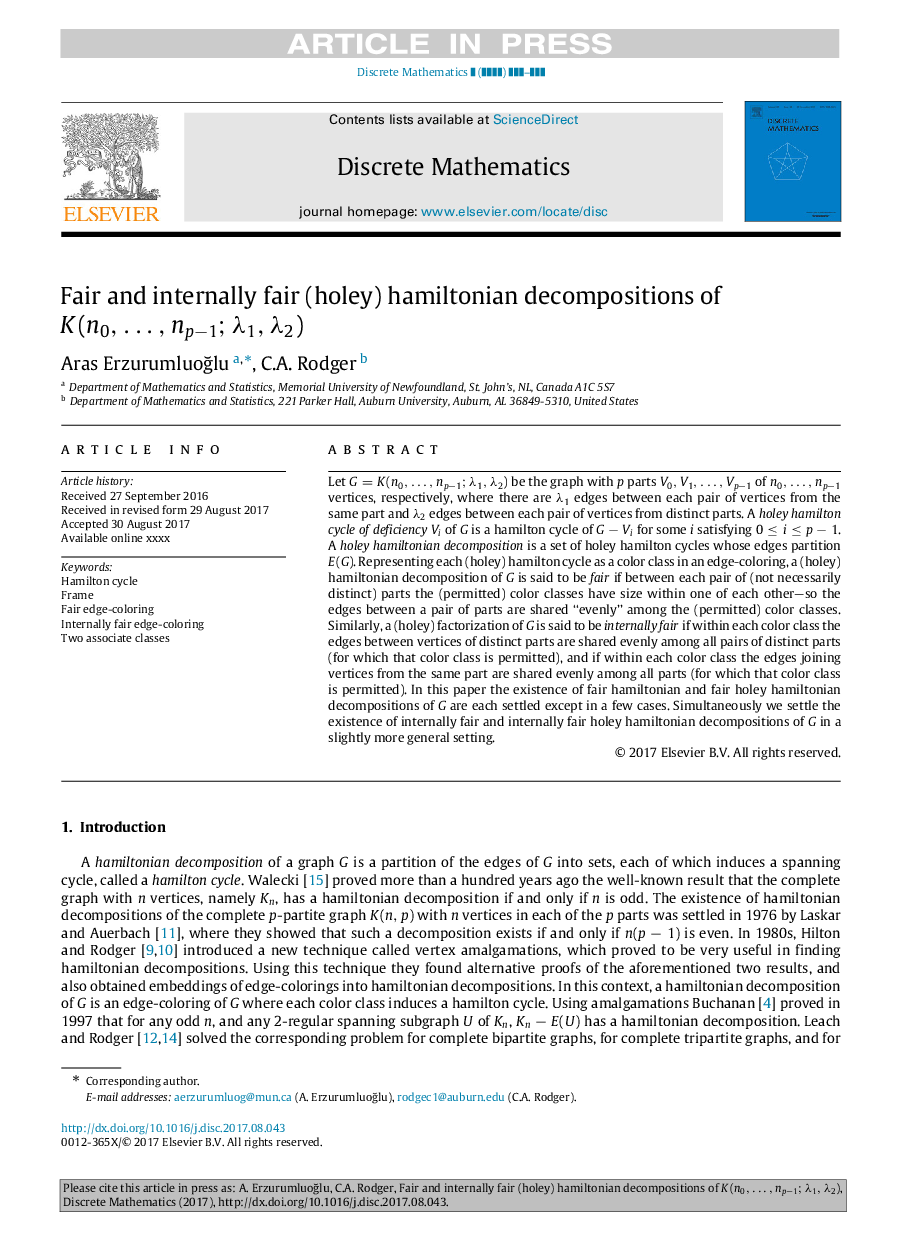| Article ID | Journal | Published Year | Pages | File Type |
|---|---|---|---|---|
| 8903106 | Discrete Mathematics | 2018 | 9 Pages |
Abstract
Let G=K(n0,â¦,npâ1;λ1,λ2) be the graph with p parts V0,V1,â¦,Vpâ1 of n0,â¦,npâ1
vertices, respectively, where there are λ1 edges between each pair of vertices from the same part and λ2 edges between each pair of vertices from distinct parts. A holey hamilton cycle of deficiencyVi of G is a hamilton cycle of GâVi for some i satisfying 0â¤iâ¤pâ1. A holey hamiltonian decomposition is a set of holey hamilton cycles whose edges partition E(G). Representing each (holey) hamilton cycle as a color class in an edge-coloring, a (holey) hamiltonian decomposition of G is said to be fair if between each pair of (not necessarily distinct) parts the (permitted) color classes have size within one of each other-so the edges between a pair of parts are shared “evenly” among the (permitted) color classes. Similarly, a (holey) factorization of G is said to be internally fair if within each color class the edges between vertices of distinct parts are shared evenly among all pairs of distinct parts (for which that color class is permitted), and if within each color class the edges joining vertices from the same part are shared evenly among all parts (for which that color class is permitted). In this paper the existence of fair hamiltonian and fair holey hamiltonian decompositions of G are each settled except in a few cases. Simultaneously we settle the existence of internally fair and internally fair holey hamiltonian decompositions of G in a slightly more general setting.
Keywords
Related Topics
Physical Sciences and Engineering
Mathematics
Discrete Mathematics and Combinatorics
Authors
Aras ErzurumluoÄlu, C.A. Rodger,
